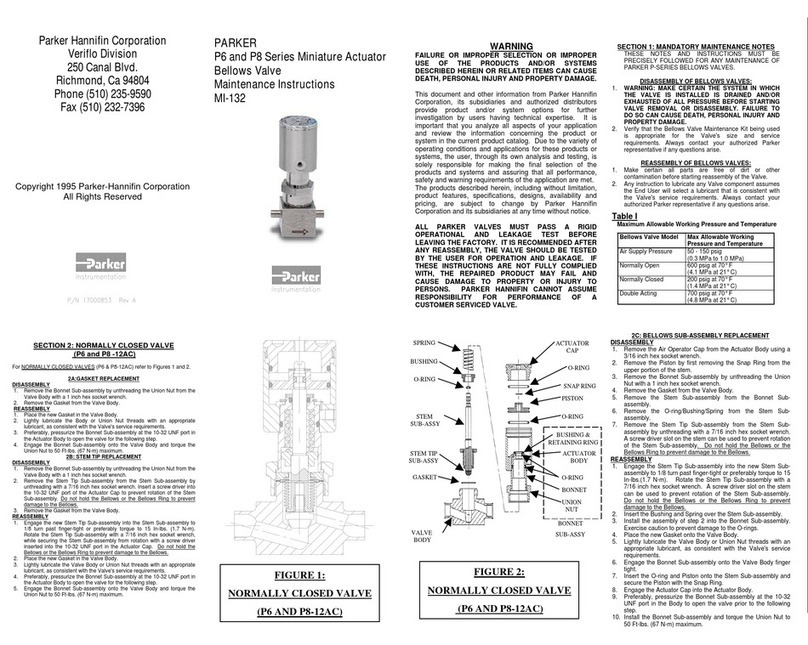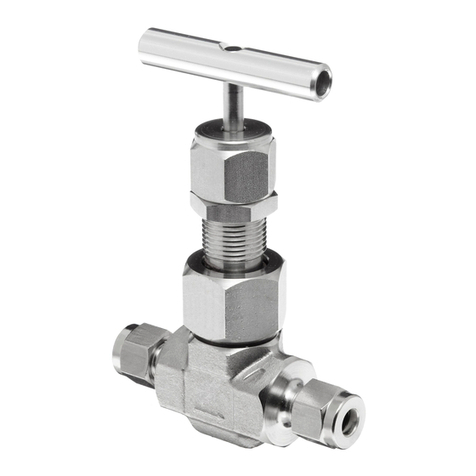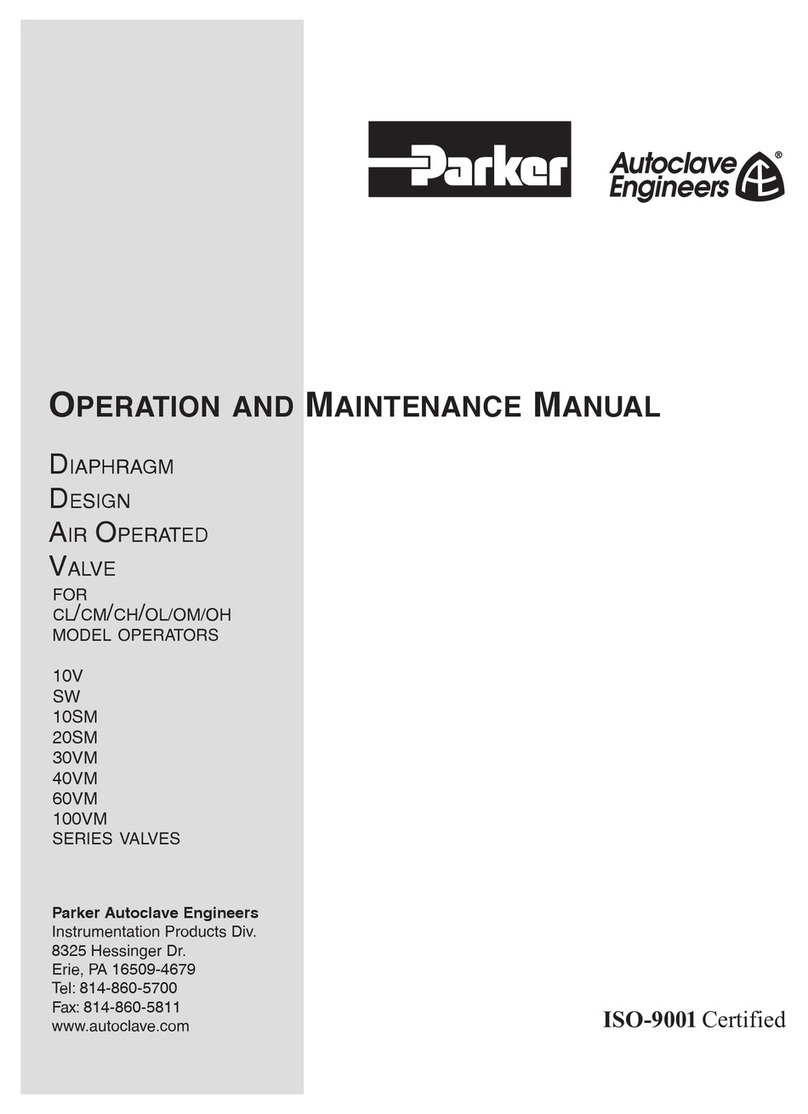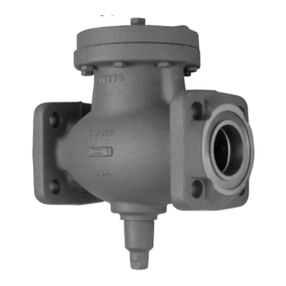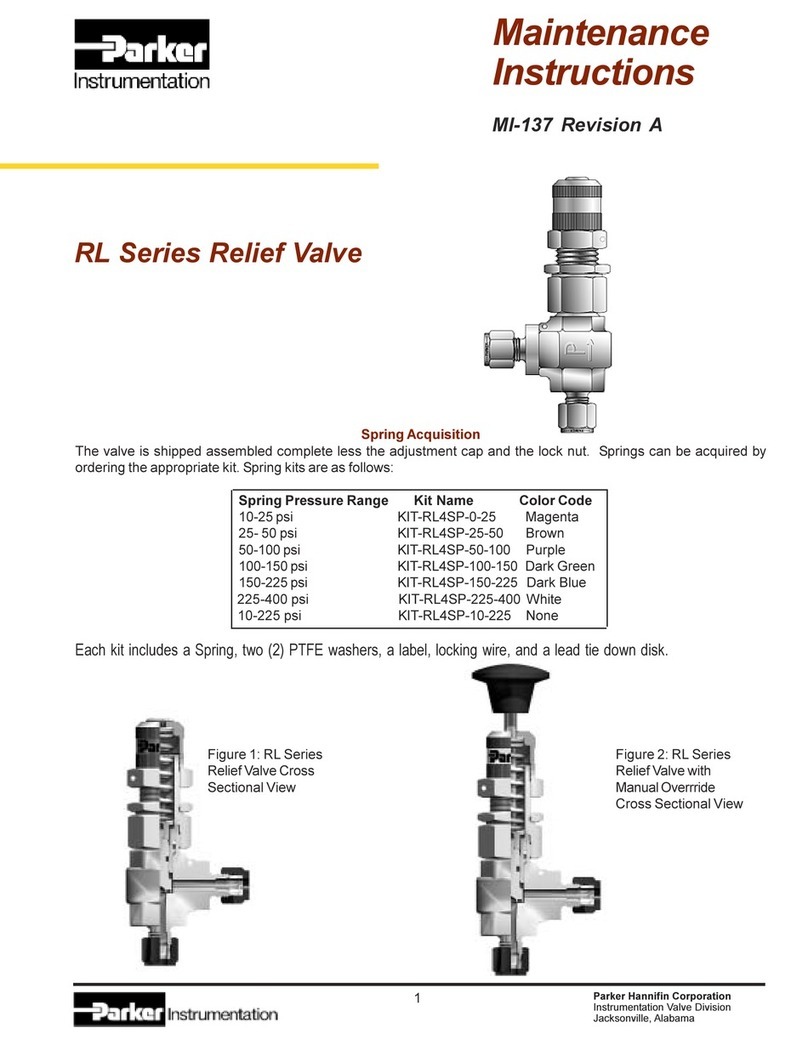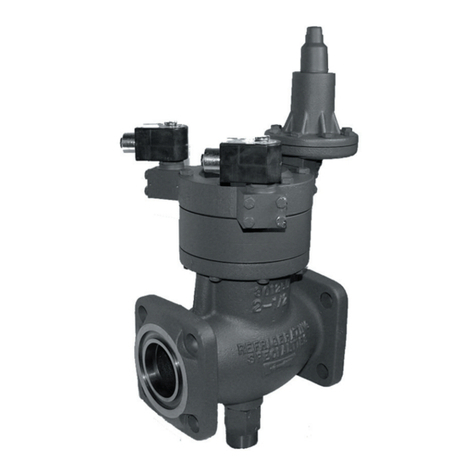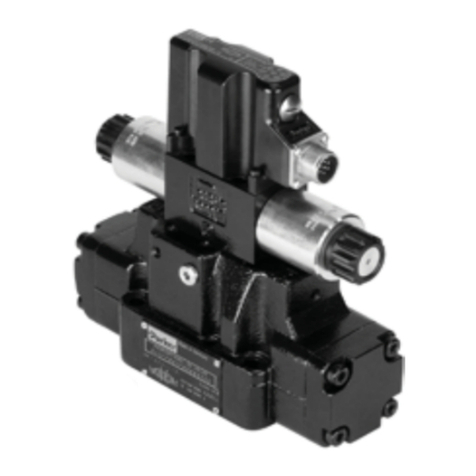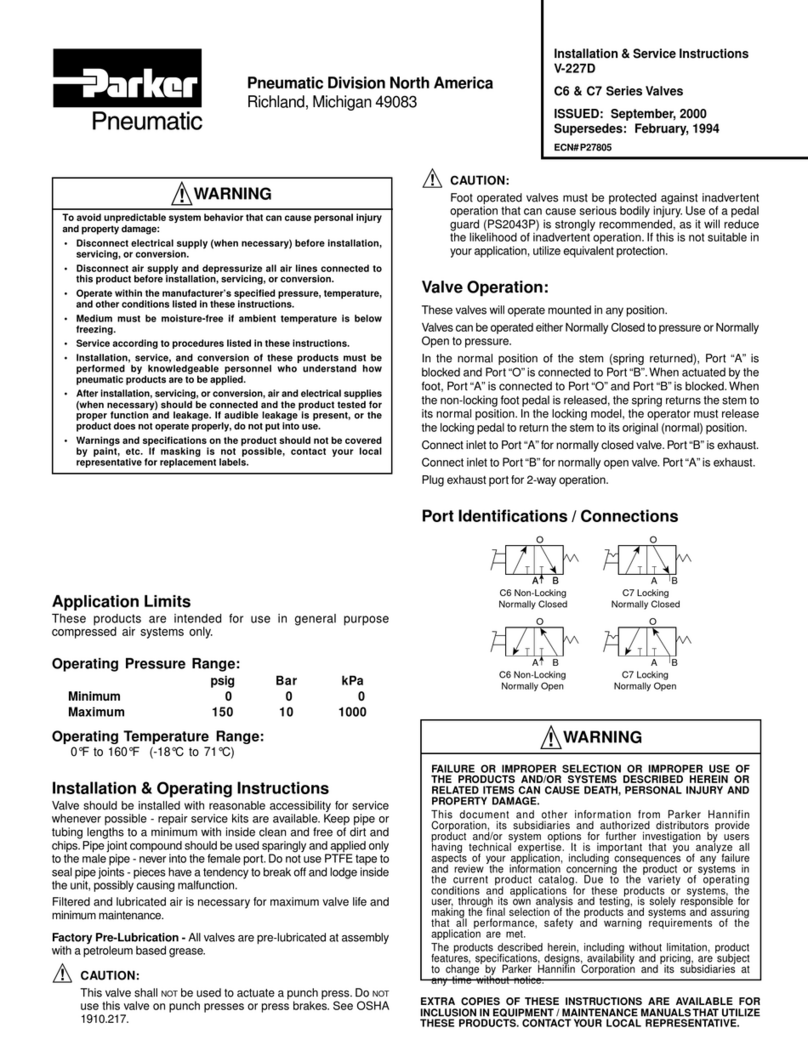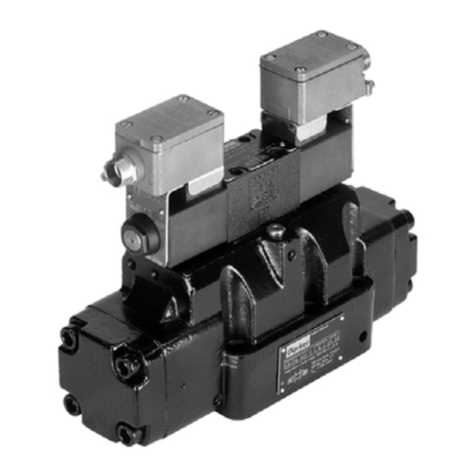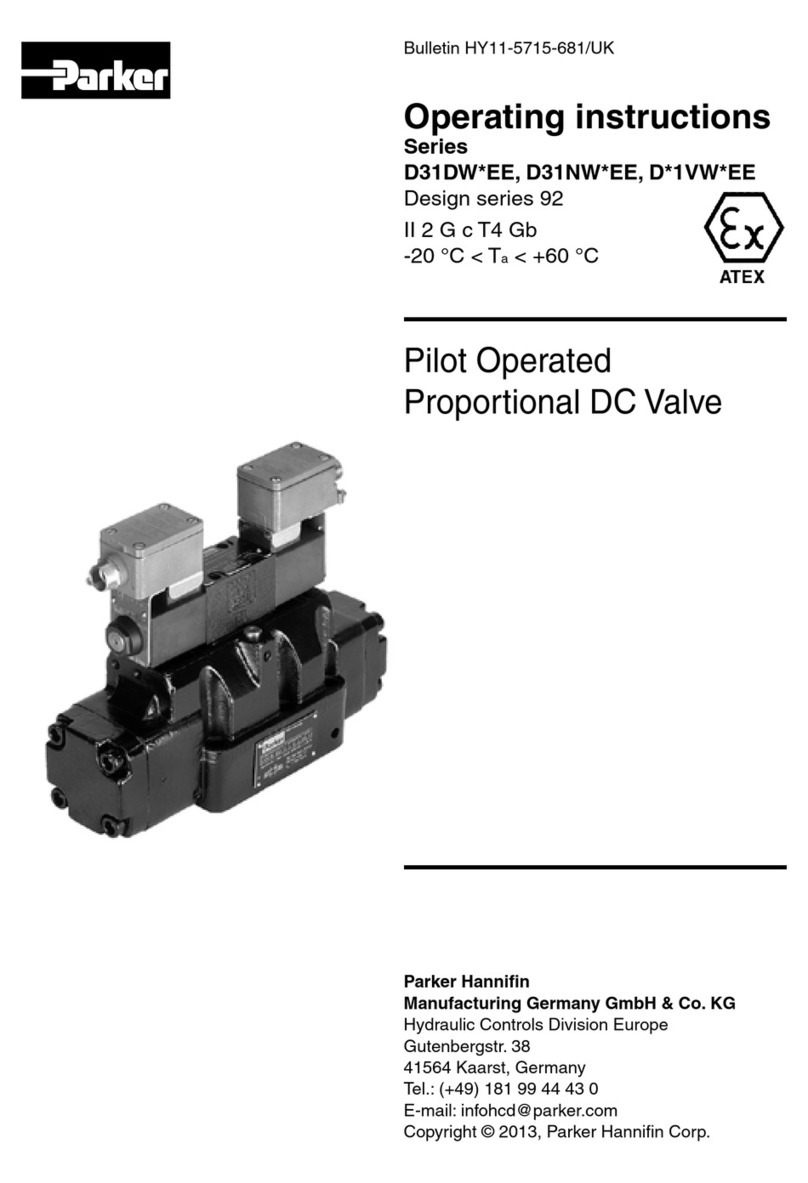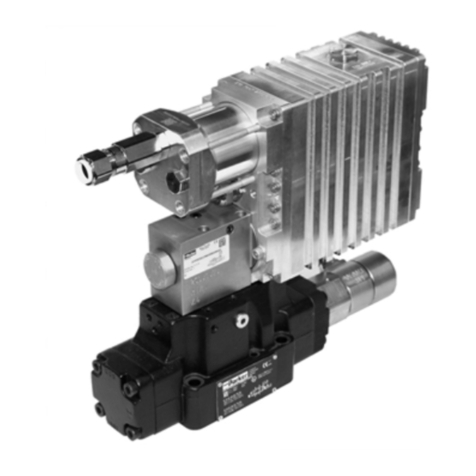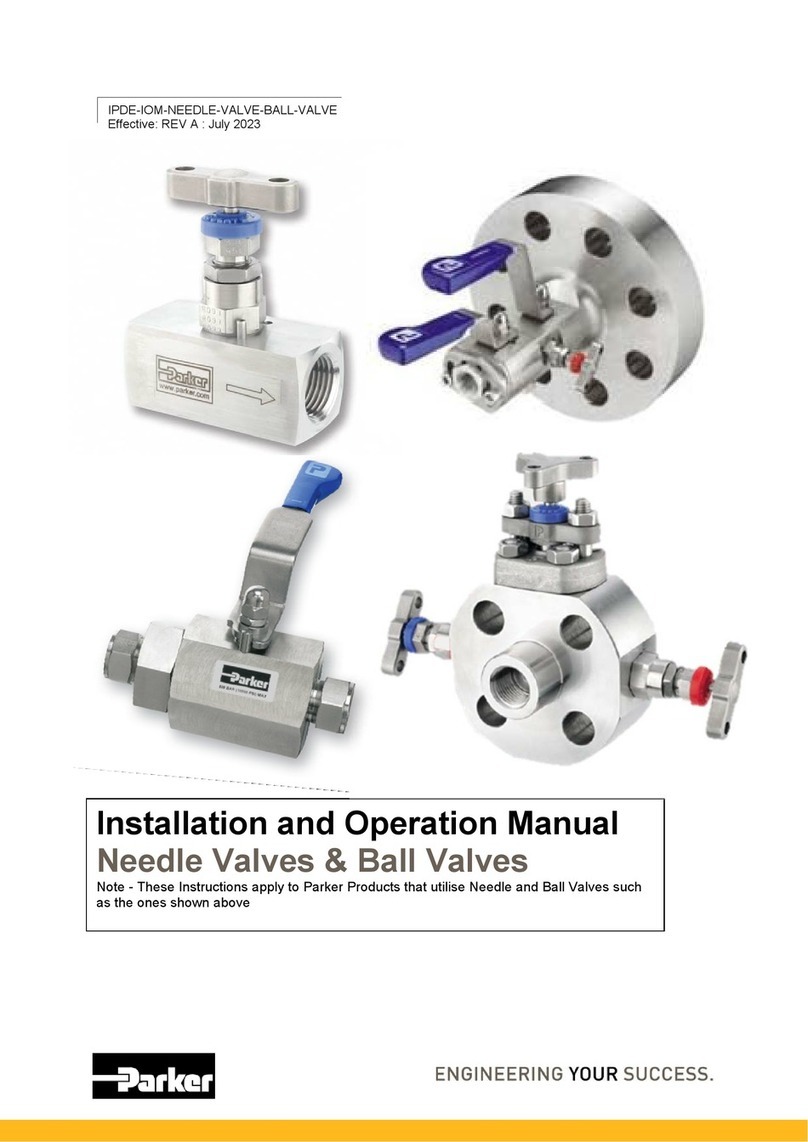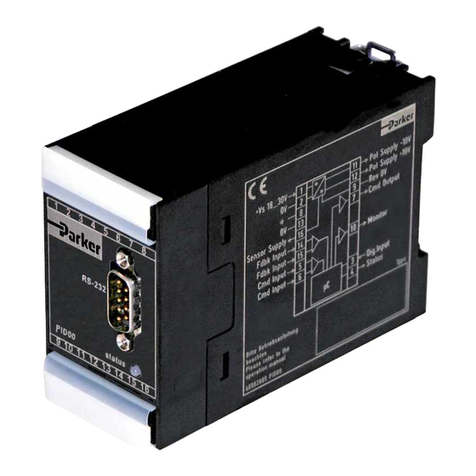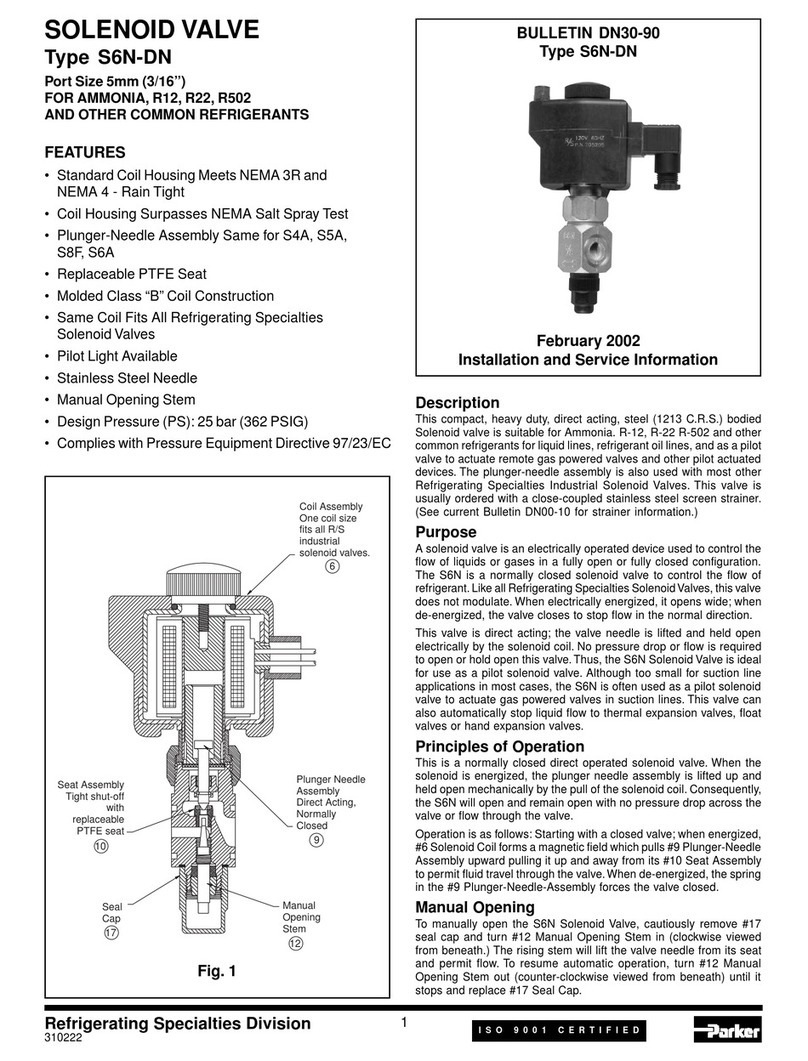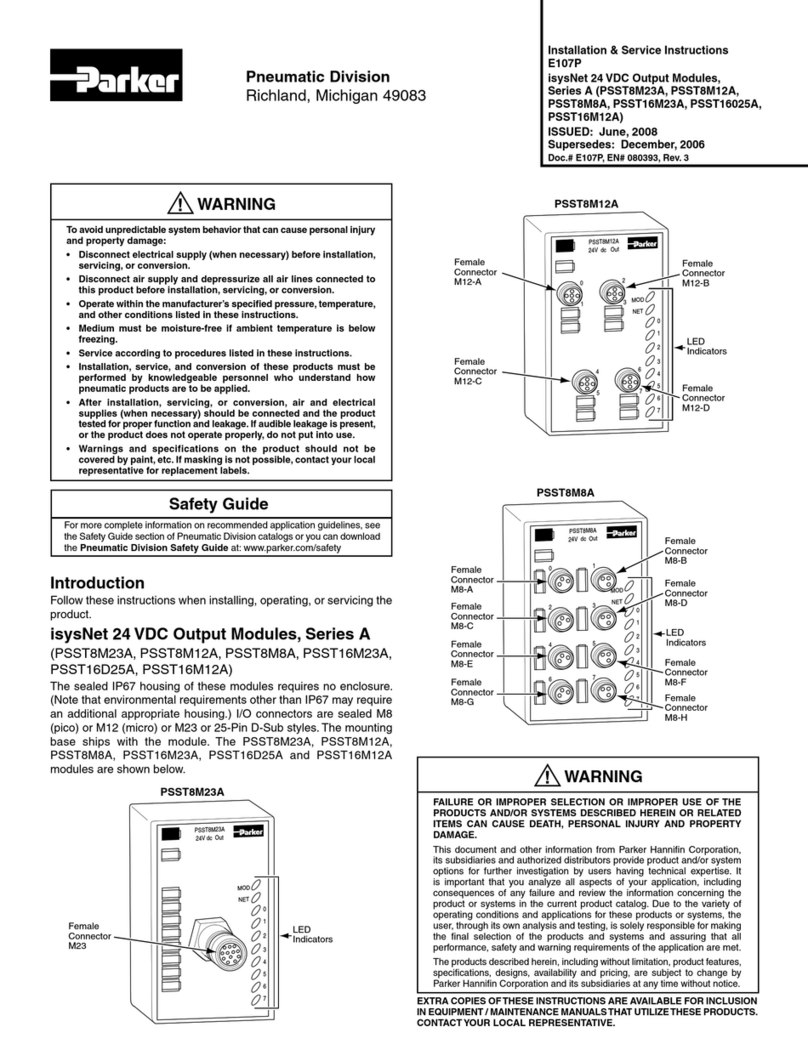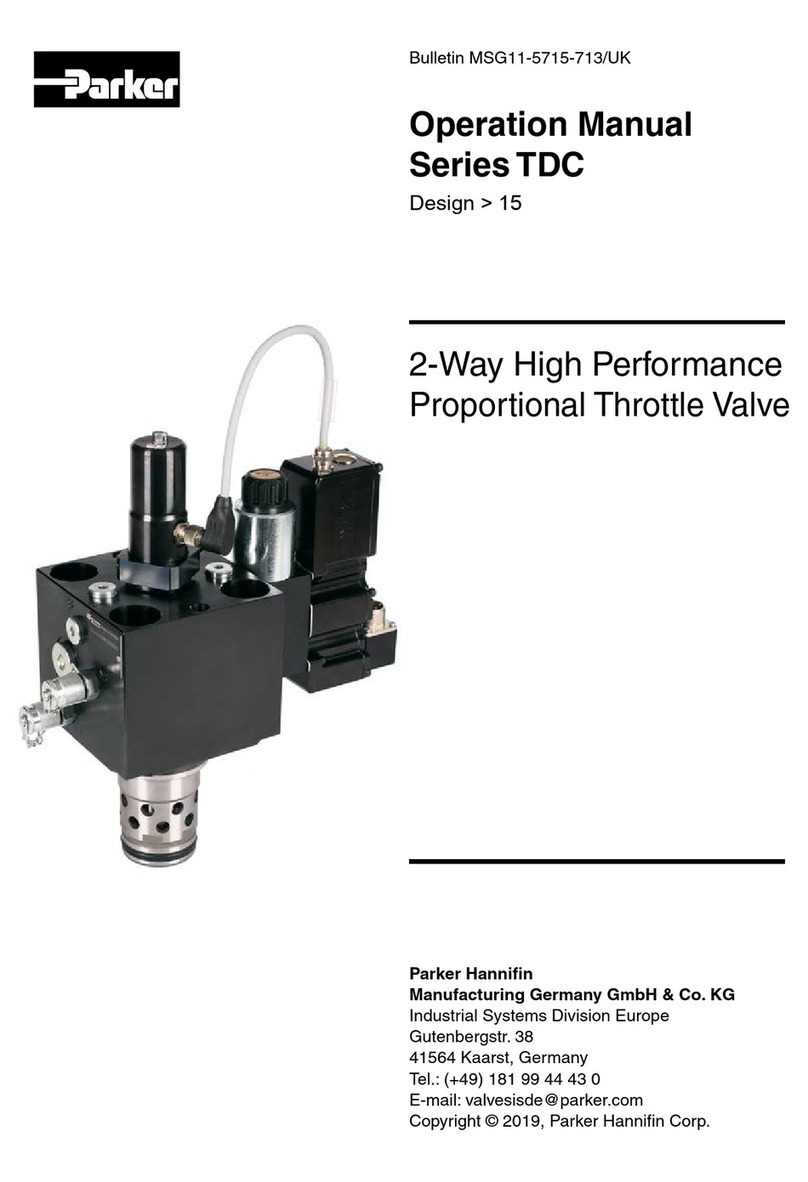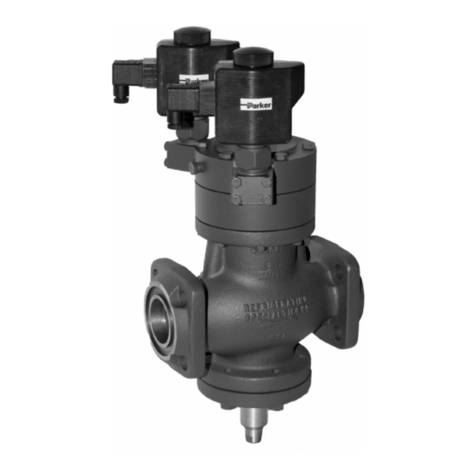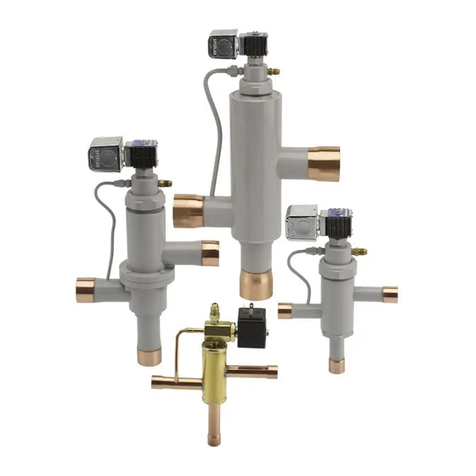
always be mounted vertically upright to ensure proper
operation.
Line pressure must conform to nameplate rating.
Piping: Remove protective closures from the ports. Connect
line pressure to the inlet port. Use of Teflon tape, thread
compound or sealants is permissible, but should be applied
sparingly to male pipe threads only. Loctite primer #764 and
pipe sealant #567 are recommended when using stainless
steel fittings with stainless steel valve bodies.
GAUTION: Do not allow foreign particles, Teflon tape, or
thread compound to enter valve. Tightening torque should
not exceed the following values for each port size: 1/8" NPT -
100 in-lbs., 1/4" NPT - 175 in-lbs., 3/8" NPT - 225 inJbs' Do
not use the sleeve or enclosure as a lever when applying
torque.
Media filtration: Normally filtration is not required, but dirt or
foreign material in the media may cause excessive leakage,
wear, or in exceptional cases, malfunction. lf filtration is
used, installthe filter on the inlet side as close to the valvp as
possible. clean periodically depending on service conditions.
Lubrication: Lubrication is not required although air line
lubrication will substantially increase valve. life.
GAUTION: Valves which have sea/s or other components
made trom ethylene propytene rubber must not be exposed to
petroleum based lubricants or other hydrocarbons.
Electrical connection: Electrical supply must conform to
nameplate rating. Connect coil leads or terminals to the
electrical circuit using standard electrical practices in
compliance with local authorities and the National Electrical
Code.
WARNING : Valves t6 be instdllecl in Hdzardous Locationi,
must be outfitted with Hazardous Location coils only. verify
nameplate data and coil part number before installing the
valve.
wARNING: Turn off electrical power before connecting the
valve to the Power source'
lf the coil assembly is located in an inconvenient orientation, it
may be reoriented to facilitate installation. Loosen coil
assembly nut, rotate coil assembly to desired position, then
retighten the nut with an input torque of 43-53 in-lbs'
DIN Goil and Terminal Box Assembly (Goil Code D100,
D200orD300;OptionGodeTB):Loosencoverscrewsan!
swing cover 90o toward the conduit hub in order to access
the interior space. separate the plastic block containing the
screw terminals from the metal enclosure using a small flat
head screwdriver. Feed the lead wires through the conduit
hub and attach them to the appropriate screw terminal. For
-__.- electrical connectiqn within the telmingl !glyq,e- field .wirg
that is rated for 90o C oi gneaten Snap the plastic block back
into place inside the metal enclosure. Replace the cover and
handtighten the cover screws. Place the gasket over the
DIN spldes on the coil and press the terminal box and coil
together.Securetheterminalboxtothecoilusingthe
mountingscrewprovided.App|y20to30in-lbs.torquetothe
mounting screw.
screw Terminal coit and Terminal Box Assembly (Goil
Code S100, 5200, or 5300; Option Code TB): Loosen
cover screws and swing cover 90o toward the conduit hub in
order to access the interior space. Feed the lead wires
through the conduit hub and attach them to the appropriate
screw terminal. For electrical connection within the terminal
box, use field wire that is rated for 90o C or greater' Replace
the cover and hand-tighten the cover screws' Press the
terminal box and coiltogether. secure the terminal box to the
coil using the mounting screw provided' Apply 20 to 30 in-
lbs. torque to the mounting screw.
CAUTIoN: When the DIN or Screw Terminal coils are used
witn ne ferminat Box Assembly, be sure to apply a wrench to
the wrench flats on the conduit hub when installing electrical
conduit.
Goil/enclosure temperature: standard valves are supplied
with coils designed for continuous duty service. Normal free
space must be provided for proper ventilation. when the coil
is energized continuously for long periods of time, the coil
assembly will become hot. The coil is designed to operate
permanently under these conditions. Any excessive heating
will be indicated by smoking and/or odor of burning coil
insulation.
For the maximum valve ambient conditions, as well as the
fluid temperatures, check the valve part number on the
nameplate and refer to the catalog'
MAINTENANCE
Note: Depending on service conditions, fluid being used,
filtration, and lubrication, it may be required to periodically
clean and/or replace worn components. See Disassembly
lnstructions.
CAUTION: Do not expose plastic or elastomeric materials to
mV tVW of commerciat cteaning fluid. Parts should be
cleaned with a mild soap and water solution.
DISASSEM BLY INSTRUCTIONS
WARWI]|O: Depressurize sysfem and turn off electrical
powe@ingrePair.
The N.C. and D.P. valves need not be removed from the line'
lf the pipe connection to N.O. valves is made to the sleeve
port, disconnect piping prior to commencing repair.
To remove the coil assemblY:
Normally Closed and Dual Purpose Valves I For both
ordinary and hazardous location constructions, unscrew the
nut on the top of the coil assembly. The wave washer and
coil assembly can now be removed'
Normally Open Valves - First unscrew the sleeve adapter
and remove. Then follow the same instructions as for
normally closed and dual purpose valves stated above'
To disassemble the pressure vessel:
CAUTION: tf the sleeve assembly does not have a hex style
flange, do not use a pipe wrench directly on the sleeve'
lnstead, use a Skinner LJ99-011 wrench nutto remove and
install the sleeve assemblY.
Normally Glosed, Normally Open, and Dual Purpose
Valves -
Slide the Skinner U99-011 wrench nut over the sleeve tube.
To unscrew the sleeve assembly, mate the wrench nut to the
sleeve flange and turn the wrench nut. The plunger, return
spring, and flange seal may now be removed. The 7121V
valves contain a hex style flange in the sleeve assembly' ln
this case, a wrench may be applied directly to the hex flange
in order to loosen the sleeve assembly.
Manual override removal (where applicable) - Extract the
override retention pin. Rotate override stem until it is free to
Page2
Flow Factor ~ 216-765-4231
